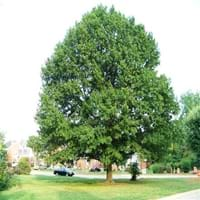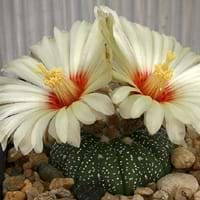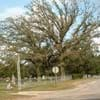About Shingle Oak and Sand Dollar Cactus
Life Span
Perennial
Perennial
Type
Tree
Cactus, Flowering Plants
Origin
United States, Central United States
Mexico, Texas
Types
Not Available
Not Available
Habitat
Woodland Garden Canopy
Desert, In desert grasslands, Rocky areas
USDA Hardiness Zone
5-8
13-15
Sunset Zone
Not Available
21,22,23,24
Habit
Spreading
Oval or Rounded
Minimum Height
Not Available
Minimum Width
Not Available
Flower Color
Yellow green, Chartreuse
Red, Yellow
Flower Color Modifier
Bicolor
Not Available
Fruit Color
Chocolate
Green, Pale Pink
Leaf Color in Spring
Green, Gray Green
Not Available
Leaf Color in Summer
Gray Green, Dark Green
Not Available
Leaf Color in Fall
Yellow, Tan, Brown
Not Available
Leaf Color in Winter
Not Available
Not Available
Leaf Shape
oblong or obovate
Not Applicable
Plant Season
Spring, Summer, Fall
Not Available
Sunlight
Full Sun
Not Available
Growth Rate
Slow
Not Available
Type of Soil
Clay, Loam
Not Available
The pH of Soil
Acidic, Neutral, Alkaline
Not Available
Soil Drainage
Well drained
Not Available
Bloom Time
Spring
Not Available
Repeat Bloomer
No
Not Available
Tolerances
Pollution, Drought
Not Available
Where to Plant?
Ground
Ground
How to Plant?
Seedlings
Seedlings, Transplanting
Plant Maintenance
Medium
Medium
Watering Requirements
Average Water Needs, Water during dry weather
Needs very little water
In Summer
Lots of watering
Lots of watering
In Spring
Moderate
Moderate
In Winter
Average Water
Average Water
Soil pH
Acidic, Neutral, Alkaline
Not Available
Soil Type
Clay, Loam
Not Available
Soil Drainage Capacity
Well drained
Not Available
Sun Exposure
Full Sun
Not Available
Pruning
Remove damaged leaves, Remove dead branches, Remove dead leaves
Remove damaged leaves, Remove dead branches, Remove dead leaves
Fertilizers
Phosphorous
All-Purpose Liquid Fertilizer
Pests and Diseases
Anthracnose, Sunken patches
Dry root rot, Root mealy bugs
Plant Tolerance
Drought
Drought
Flowers
Insignificant
Yes
Flower Petal Number
Not Available
Not Available
Showy Fruit
Yes
Not Available
Edible Fruit
No
Not Available
Fragrant Flower
No
Not Available
Fragrant Fruit
No
Not Available
Fragrant Leaf
No
Not Available
Fragrant Bark/Stem
No
Not Available
Showy Foliage
Yes
Not Available
Showy Bark
Yes
Not Available
Foliage Texture
Coarse
Bold
Foliage Sheen
Glossy
Not Available
Invasive
No
Not Available
Self-Sowing
Yes
Not Available
Attracts
Birds
pollinators
Allergy
Severe allergen
Not Available
Aesthetic Uses
Beautification
Beautification, Showy Purposes
Beauty Benefits
Not Available
Not Available
Environmental Uses
Air purification
Air purification
Medicinal Uses
Antiseptic, Astringent, Emetic, Febrifuge, Tonic
Not Available
Part of Plant Used
Seeds
Flowers
Other Uses
Roasted seed is used as a coffee substitute, Used as a thickening in stews, Wood is used for making furniture
Used as Ornamental plant
Used As Indoor Plant
No
Yes
Used As Outdoor Plant
Yes
Yes
Garden Design
Feature Plant, Hedges, Screening / Wind Break, Shade Trees, Street Trees
Not Available
Botanical Name
QUERCUS imbricaria
Astrophytum asterias
Common Name
Shingle Oak
Star Cactus, Sand Dollar Cactus
In Hindi
Shingle Oak
रेत डॉलर कैक्टस
In German
Kies Eiche
Sand Dollar Cactus
In French
Shingle Oak
Sand Dollar Cactus
In Spanish
teja de madera de roble
Sand Dollar Cactus
In Greek
βότσαλα Oak
Sand Dollar Cactus
In Portuguese
Shingle Oak
Cacto do dólar de areia
In Polish
gont Oak
Sand Dollar Cactus
In Latin
Quercus imbricaria
Sand Dollar Cactus
Phylum
Magnoliophyta
Magnoliophyta
Class
Magnoliopsida
Magnoliopsida
Order
Fagales
Caryophyllales
Family
Fagaceae
Cactaceae
Genus
Quercus
Astrophytum
Clade
Angiosperms, Eudicots, Rosids
Angiosperms, Core eudicots, Eudicots
Tribe
Not Available
Cacteae
Subfamily
Fagoideae
Cactoideae
Number of Species
Not Available
Properties of Shingle Oak and Sand Dollar Cactus
Wondering what are the properties of Shingle Oak and Sand Dollar Cactus? We provide you with everything About Shingle Oak and Sand Dollar Cactus. Shingle Oak doesn't have thorns and Sand Dollar Cactus doesn't have thorns. Also Shingle Oak does not have fragrant flowers. Shingle Oak has allergic reactions like Severe allergen and Sand Dollar Cactus has allergic reactions like Severe allergen. Compare all the properties and characteristics of these two plants. Find out which of these plant can be used as indoor plant. If you are interested to decorate your house and garden, find out aesthetic uses, compare them and select the plant which will beautify your surrounding. Along with beautification, try comparing medicinal and edible uses of Shingle Oak and Sand Dollar Cactus and you can choose the plant having best and most benefits.
Season and Care of Shingle Oak and Sand Dollar Cactus
Season and care of Shingle Oak and Sand Dollar Cactus is important to know. While considering everything about Shingle Oak and Sand Dollar Cactus Care, growing season is an essential factor. Shingle Oak season is Spring, Summer and Fall and Sand Dollar Cactus season is Spring, Summer and Fall. The type of soil for Shingle Oak is Clay, Loam and for Sand Dollar Cactus is Not Available while the PH of soil for Shingle Oak is Acidic, Neutral, Alkaline and for Sand Dollar Cactus is Not Available.
Shingle Oak and Sand Dollar Cactus Physical Information
Shingle Oak and Sand Dollar Cactus physical information is very important for comparison. Shingle Oak height is 1,830.00 cm and width 1,220.00 cm whereas Sand Dollar Cactus height is Not Available and width Not Available. The color specification of Shingle Oak and Sand Dollar Cactus are as follows:
Shingle Oak flower color: Yellow green and Chartreuse
Shingle Oak leaf color: Green and Gray Green
Sand Dollar Cactus flower color: Red and Yellow
- Sand Dollar Cactus leaf color: Not Available
Care of Shingle Oak and Sand Dollar Cactus
Care of Shingle Oak and Sand Dollar Cactus include pruning, fertilizers, watering etc. Shingle Oak pruning is done Remove damaged leaves, Remove dead branches and Remove dead leaves and Sand Dollar Cactus pruning is done Remove damaged leaves, Remove dead branches and Remove dead leaves. In summer Shingle Oak needs Lots of watering and in winter, it needs Average Water. Whereas, in summer Sand Dollar Cactus needs Lots of watering and in winter, it needs Average Water.





